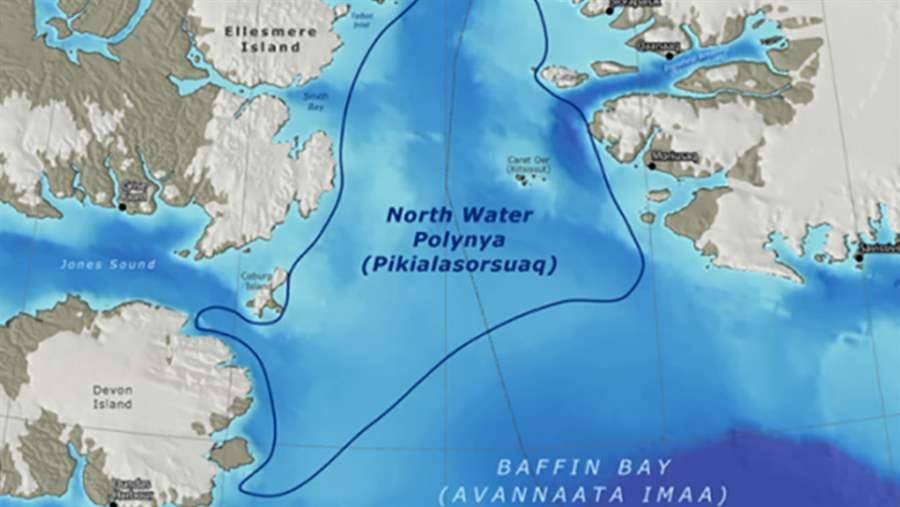North Water Polynya
Overview
The North Water polynya—an area of open water surrounded by sea ice—is the largest one in the Northern Hemisphere and the most biologically productive ecosystem north of the Arctic Circle. It lies in northern Baffin Bay between Greenland and Canada’s Ellsmere Island near Smith Sound and Nares Strait.
 © Oceans North, The Pew Charitable Trusts
© Oceans North, The Pew Charitable TrustsNorth Water Polynya
The North Water, which Inuit call Pikialasorsuaq, is one of the primary connections between the Arctic Ocean and the North Atlantic. Along with Lancaster Sound and Melville Bay, the North Water is part of the route for one of the world’s great whale migrations every summer.
 © Anders Peter
© Anders PeterBowhead Whale
The polynya’s ice-free waters allow for an unusually early spring plankton bloom in the region. This provides food for Arctic cod, a keystone species for the entire ecosystem. Large concentrations of marine mammals, including walrus, seals, and polar bears and beluga, narwhal and bowhead whales, feed at the edge of the ice until the spring breakup. The same habitat provides vital feeding grounds for millions of seabirds, including an estimated two-thirds of the world’s dovekies, a small auk, and thick-billed murres.
The North Water’s productivity is due in large part to large currents influenced by the Earth’s rotation. Cold water from the Pacific Ocean carried across the Arctic mixes with warmer Atlantic water that travels north along the west coast of Greenland. Weather and ocean currents mix water and nutrients in the polynya, including large amounts of fresh water from sea ice and glaciers. The ice-free area forms as a result of seasonal west winds and a stable ice bridge in Kane Basin to the north. Upwellings of relatively warm water prevent the center of the polynya from freezing completely.
In recent years, the northern ice bridge in Kane Basin has become less reliable and the boundaries of the polynya less defined. The environmental consequences of these changes, linked to larger climatic shifts observed in many parts of the Arctic, are unknown. But the mixing of Pacific and Atlantic waters ensures that the North Water will remain a vitally important part of the Arctic.
 © Oceans North, The Pew Charitable Trusts
© Oceans North, The Pew Charitable TrustsNorth Water Polynya Currents
The North Water polynya’s ice bridge between Canada and Greenland has been a human migration route into Greenland for thousands of years and the polynya has been recognized by Inuit for generations as important habitat. These lands have been home to the world’s extreme northernmost human settlements for at least 5,000 years. Today, communities in Nunavut in Canada and Avanersuaq in northwestern Greenland continue to rely on the polynya’s biological richness for survival.
In September 2013, Canadian and Greenlandic representatives from communities that surround Pikialarsorsuaq, the Inuit name for the North Water Polynya, met in Nuuk to discuss the importance of this region. The two-day workshop, co-sponsored by ICC-Greenland and Oceans North Greenland, concluded with a strong consensus to explore joint strategies for safeguarding and monitoring the health of this region for future generations.











